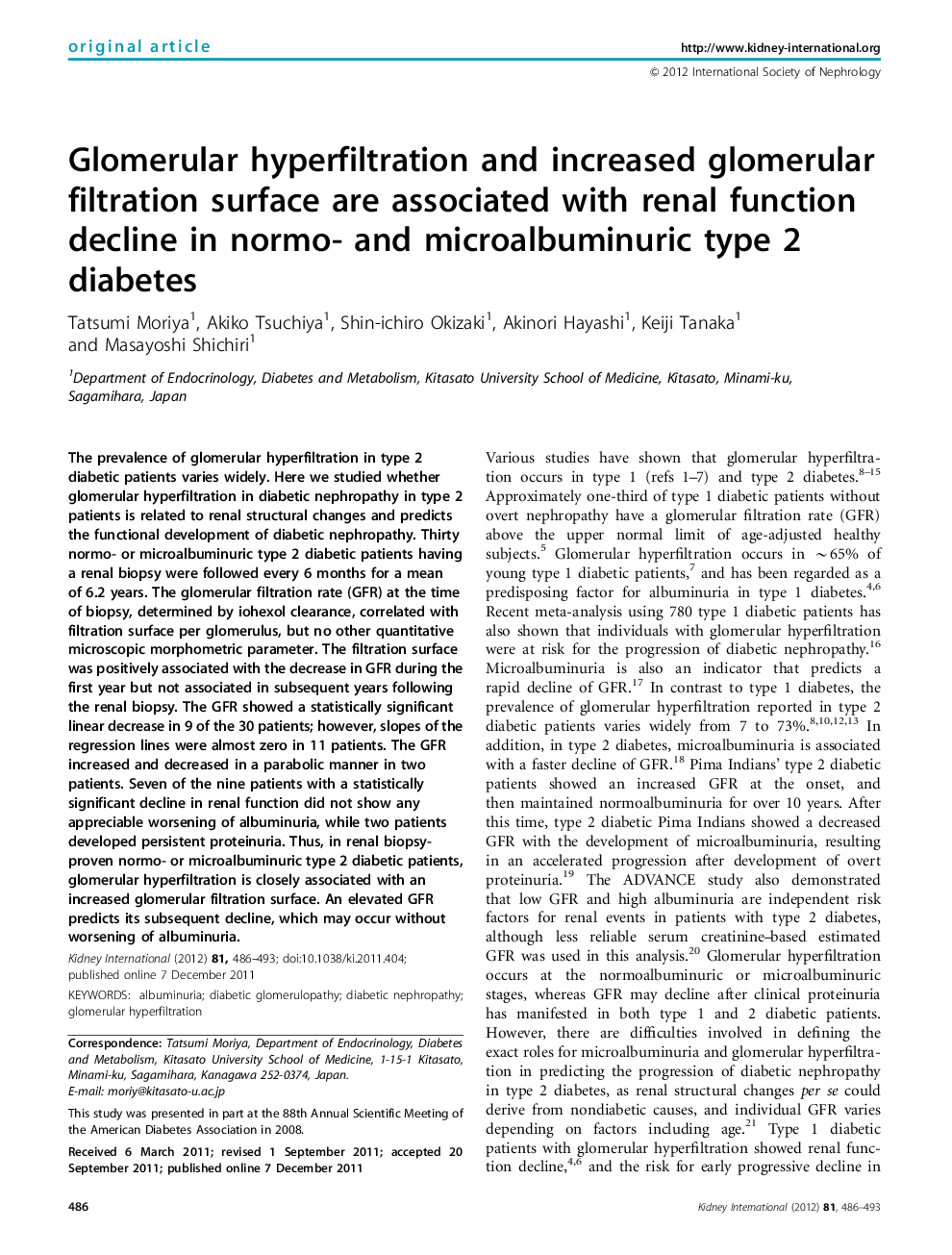| Article ID | Journal | Published Year | Pages | File Type |
|---|---|---|---|---|
| 3883519 | Kidney International | 2012 | 8 Pages |
The prevalence of glomerular hyperfiltration in type 2 diabetic patients varies widely. Here we studied whether glomerular hyperfiltration in diabetic nephropathy in type 2 patients is related to renal structural changes and predicts the functional development of diabetic nephropathy. Thirty normo- or microalbuminuric type 2 diabetic patients having a renal biopsy were followed every 6 months for a mean of 6.2 years. The glomerular filtration rate (GFR) at the time of biopsy, determined by iohexol clearance, correlated with filtration surface per glomerulus, but no other quantitative microscopic morphometric parameter. The filtration surface was positively associated with the decrease in GFR during the first year but not associated in subsequent years following the renal biopsy. The GFR showed a statistically significant linear decrease in 9 of the 30 patients; however, slopes of the regression lines were almost zero in 11 patients. The GFR increased and decreased in a parabolic manner in two patients. Seven of the nine patients with a statistically significant decline in renal function did not show any appreciable worsening of albuminuria, while two patients developed persistent proteinuria. Thus, in renal biopsy-proven normo- or microalbuminuric type 2 diabetic patients, glomerular hyperfiltration is closely associated with an increased glomerular filtration surface. An elevated GFR predicts its subsequent decline, which may occur without worsening of albuminuria.
